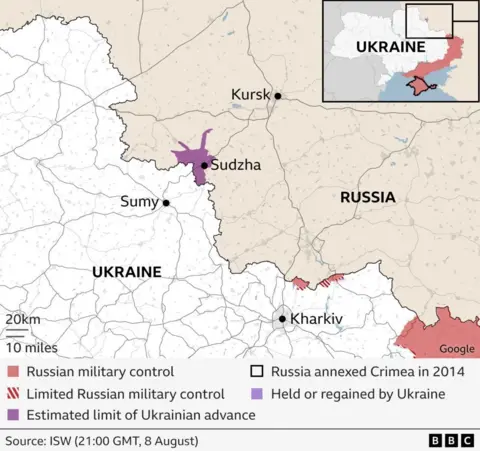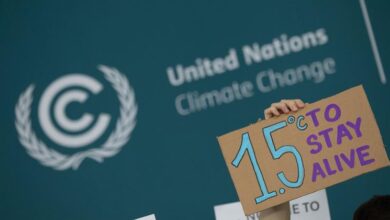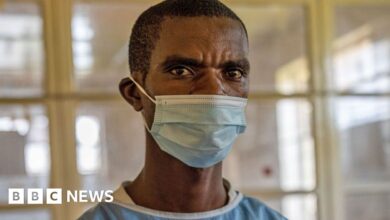Ukrainian troops have now advanced 30km into Russia’s Kursk region, Moscow says
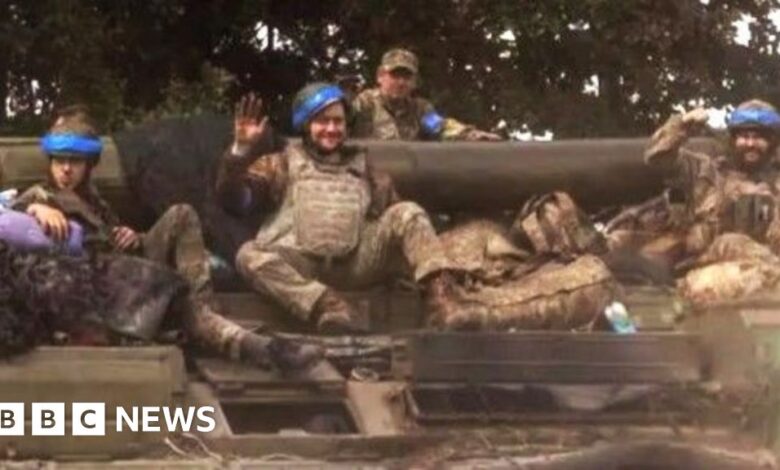
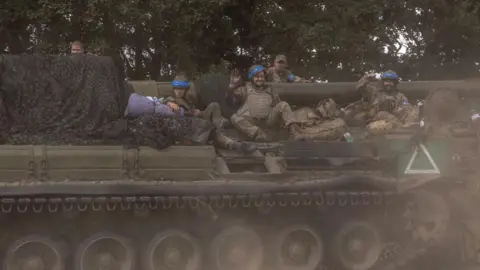 Getty Images
Getty ImagesUkrainian troops have advanced 30km into Russia, in what is considered the deepest and most significant incursion since Moscow began its full-scale invasion of Ukraine in February 2022.
Russia’s defence ministry said its forces clashed with Ukrainian troops near the villages of Tolpino and Obshchy Kolodez as the offensive in the Kursk region entered its sixth day.
Foreign Ministry spokeswoman Maria Zakharova accused Kyiv of “threatening the peace-loving Russian people”.
President Volodymyr Zelensky, who directly acknowledged the attack for the first time in a speech last night, said 2,000 cross-border attacks had been launched by Russia from Kursk this summer.
“Artillery, mortars, drones. We also recorded rocket attacks, and each such attack deserves a fair response,” Mr Zelensky told the nation in his nightly address from Kyiv.
A senior Ukrainian official told AFP news agency that thousands of troops were involved in the operation, far outnumbering the small incursion initially reported by Russian border guards.
While Ukrainian-backed sabotage groups have carried out occasional cross-border attacks, the Kursk offensive marked the largest coordinated attack on Russian territory by Kyiv’s conventional forces.
“We are attacking. The goal is to stretch the enemy’s positions, inflict maximum losses and destabilize the situation in Russia because they cannot defend their borders,” the official said.
Russia’s defence ministry said on Sunday that its forces had “foiled attempts by enemy mobile groups with armoured vehicles to penetrate deep into Russian territory”.
But in an apparent admission that Kyiv forces have now advanced deep into the Kursk border area, the Defense Ministry reported that they had engaged Ukrainian troops near the villages of Tolpino and Obshchy Kolodez – about 25km and 30km from the Russian-Ukrainian border, respectively.
Footage circulating online and verified by the BBC also shows a Russian air strike near the village of Levshinka, about 25km from the border.
The Ukrainian army claims to have captured several settlements in the Kursk region. In Guevo, a village about 3km from Russia, soldiers filmed themselves removing the Russian flag from an administrative building.
Footage also shows Ukrainian troops seizing administrative buildings in Sverdlikovo and Poroz, while heavy fighting was recorded in Sudzha – a town of around 5,000 people.
The Ukrainian military filmed themselves outside Sudzha at a major gas facility involved in the transit of natural gas from Russia to the EU via Ukraine, an operation that continues despite the war.
In the Sumy region, which borders the Kursk region, BBC reporters witnessed a steady stream of armoured personnel carriers and tanks moving towards Russia.
The armoured vehicles have white triangular insignia, apparently to distinguish them from hardware used in Ukraine itself. Meanwhile, aerial photographs appear to show Ukrainian tanks fighting inside Russia.
Images analysed by BBC Verify also show Russia building new defences near the Kursk nuclear power plant. Ukrainian forces are involved at Obshchy Kolodez, 50km (31 miles) from the facility.
Contrasting satellite imagery of the same location taken yesterday with images from a few days earlier, shows several new trenches being built in the vicinity, with the closest one about 8km (5 miles) from the plant.
Russia says 76,000 people have been evacuated from the border area in the Kursk region, where local authorities have declared a state of emergency.
Acting regional governor Aleksei Smirnov also said 15 people were injured on Saturday night when debris from a downed Ukrainian missile fell on a multi-storey building in the regional capital, Kursk.
Oleksiy Goncharenko – a Ukrainian MP – praised the operation, saying it “brought us closer to peace than a hundred peace summits”.
“When Russia needs to fight on their own territory, when the Russian people are fleeing, when people are concerned, that’s the only way to show them to stop this war,” he told the BBC.
The Kursk offensive came after weeks of Russian advances in the east, where a string of villages had been captured by Kremlin forces.
Some analysts say the attack on the Kursk was part of an effort to force Russia to redeploy its forces away from eastern Ukraine and relieve pressure on Ukraine’s beleaguered defenses.
But Ukrainian officials told AFP there had been little easing of Russian operations in the east so far.
Earlier this week, Russian President Vladimir Putin said the attack was a “major provocation”.
Meanwhile, emergency services in the Kyiv region said a man and his four-year-old son were killed in a rocket attack near the capital last night.
Air defenses also destroyed 53 of 57 Russian-launched attack drones in overnight airstrikes, air force officials said. They said four North Korean-made missiles were also fired as part of the attack.
Russia has been forced to turn to the isolated Asian nation for ammunition, as the United States accuses Pyongyang of shipping large quantities of military hardware.
Elsewhere, Russian officials in the occupied Zaporizhzhia province said a fire broke out at the region’s nuclear power plant on Sunday.
Yevgeny Balitsky, the Kremlin-appointed governor of Zaporizhzhia, said the fire broke out after shelling by Ukrainian forces. He said there had been no increase in radiation around the plant and that crews were controlling the fire.
In a statement posted on X, the United Nations nuclear watchdog – the International Atomic Energy Agency – said on-site inspectors witnessed “dense black smoke” coming from the north of the facility, but stressed that “no impact” on nuclear safety had been reported.
President Zelensky said in a social media post that Russian forces had started the fire at the plant.
The plant has been under the control of the Russian military and officials since 2022. It has not produced electricity for more than two years, and all six reactors have been offline since April.
More information from Benedict Garman.
